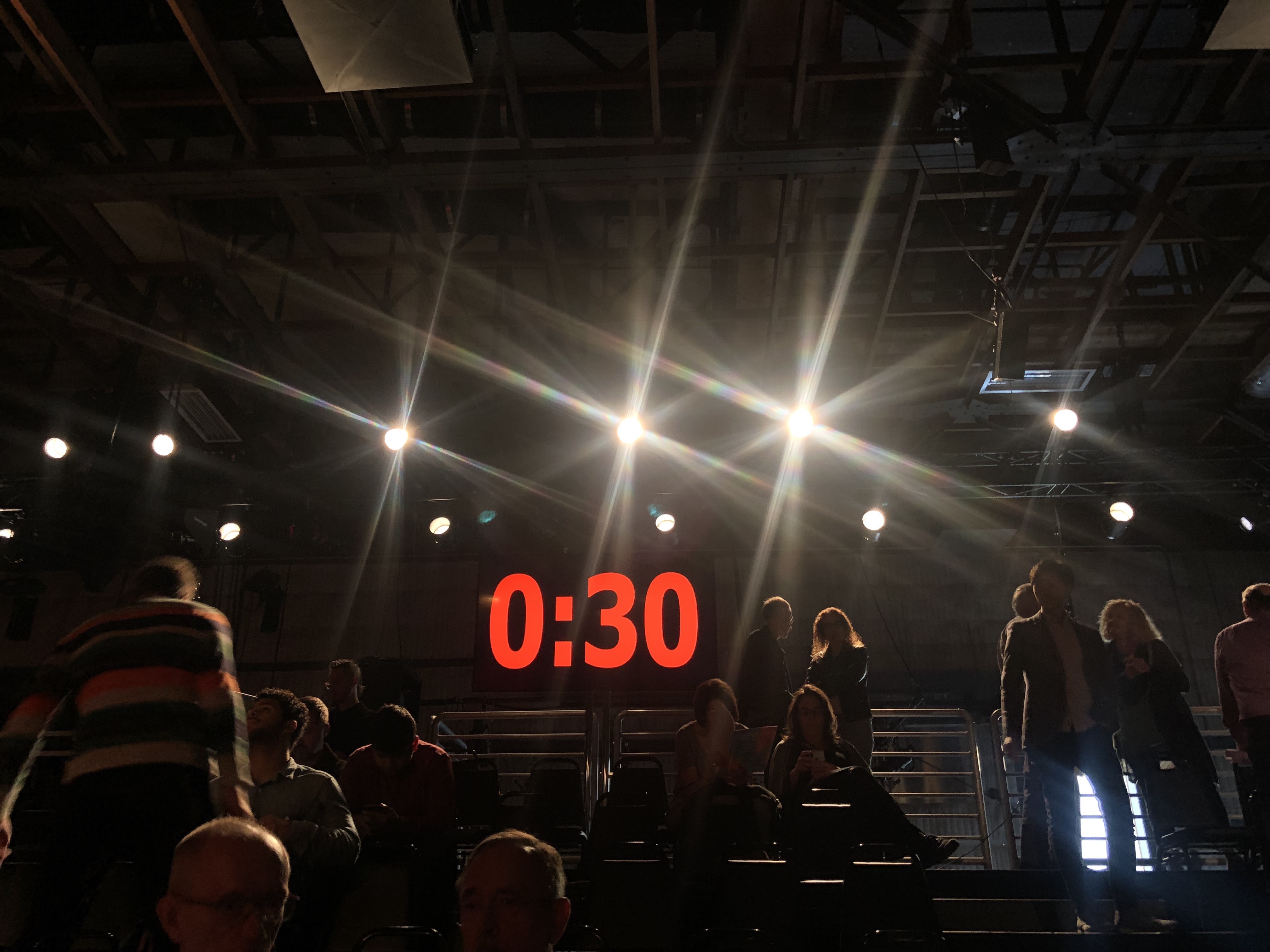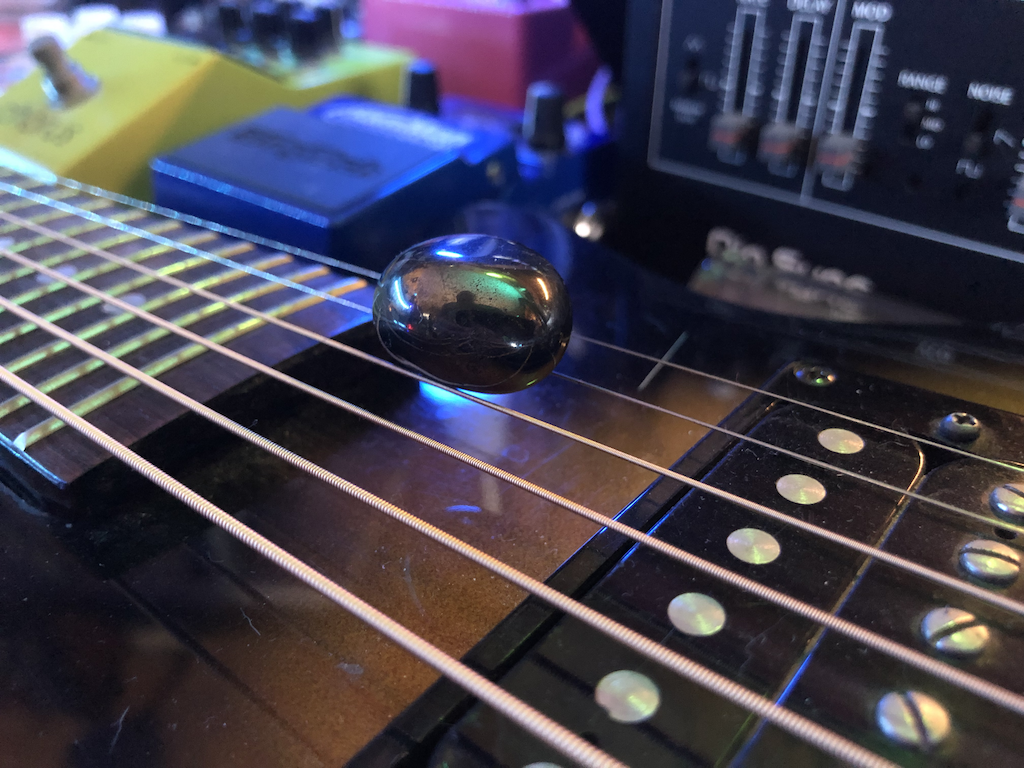LA Phil graces Cage’s Europeras 1 & 2

John Cage liked to borrow. Whether in musical style or approach to theatre, the materials themselves are often not his. Musical scores evolved into graphic iconography or instruction governed by brackets of time and/or duration. Written pieces were amalgamations, mesostics “written through” other authors’ work, or more “cut-up” style constructions of various texts.
It applied to his philosophies, too. He is known to take bits and pieces of Eastern practice and weave their concepts into his worldview and compositional process. Concepts like the Huayan Buddhist “interpenetration” of all things were slightly bent by Cage, who found them useful for composing, but maybe slightly ignoring (or denying) any inherent interconnectedness.
Such synergy is often attributed to improvisation, like a jazz combo. On the contrary, Cage was very much about the accidental interpenetration of elements by downplaying any relationship importance between them at all. The idea of “playing off each other” as if playing jazz was not allowed, simply because it wasn’t scored that way.
These were simply concurrent events that coincided in layers against each other, necessarily connected by nothing but the experience, indeterminate and interpenetrating. It seems to imply chaos, and that is precisely how my wife described the LA Phil west coast premiere of Europeras 1 & 2 to me afterward: “too much going on for your brain to comprehend” and “the weirdest thing you’ve taken me to yet.”
Now that’s saying something! We’ve participated in Long Beach SoundWalk multiple years, we’ve seen some outrageous installations and concerts. Even my music is pretty damn strange. Whether or not this actually hit the tip of the Weirdometer, there was one thing we agreed upon: nothing was happening, and everything was happening.
My wife and I have never been to a movie studio lot, so it was a new experience just arriving and finding our way back through the closely stacked identical warehouses to Studio 23. The Sunday matinee crowd fascinated us. We guessed the throng held Cage fans, opera fans, music students, season ticket pass holders and supporters of LA Phil, friends of the cast and orchestra, and even scattered fashionistas.
Inside was a simple proscenium stage configuration, the audience rising up and back, fly loft and everything built into this huge soundstage. On each side of the main stage were three columns of
The distinction of 1 & 2 is a programmatic one, they have always been performed together as a 90 +
The Europeras are a culmination of this approach by Cage, and not only because they are among the last works he composed before his death in 1992. Chance procedures determine every aspect of the production, from costuming and scenery to blocking and the placement of arias selected from the standard repertoire. In the midst, selections from Truckera (a tape of 101 layered European opera fragments) were broadcast stereoscopically across loudspeakers above the audience, giving the sonic illusion a “truck of opera” was rattling by the performance and drowning everything out.
The entire work becomes a brilliant collage of sight, sound, dimension, and movement. There are entirely mind-bending Fluxus moments of absurdity, subtle sequences of sublime beauty, and a good amount of unintended comedy.
The LA Phil performance mostly held true to Cage’s intent. There were dancers moving independently of both scrim- and prop-based scenery (also sequenced with chance operations), but also acting as stagehands and crew to move things around. Very seldom it starts to drift, as when these same dancers become engaged with the opera singers in their individual scenes.
I have to hand it to the singers in this production. It is not hyperbole to state that seeing this performed is at the top of my bucket list. These folks were charged with non-traditional blocking, ignoring every other musical cue they hear around them while staying in-tune as possible, having to watch the large count-up clocks posted on each precipice of the stage, navigate indeterminately moving scenery and other actors, all while performing a fully committed aria wearing costuming and performing blocking both separately derived by chance operations and completely unrelated to the entire way they were taught to interpret an aria.
Some did this better than others. One of the more successful sang “
Many of the singers’ performances were like this. As was the orchestra. There was an incredible amount of commitment in this show that is absolutely vital to Cage’s music. The entire ensemble – from stage crew and props to performers and designers – dialed in on this aspect of performing Cage and it comes through.
Lighting queues and design were scored completely separately as well, often focussing on the audience, into the ceiling of the warehouse, across the back of the building behind the open stage area. Scrim backgrounds, some looking quite ancient, dropped at various elevations, frequently covering an entire “scene” behind it due to the chance operations involved. Sometimes individually numbered squares onstage were illuminated, amorphous areas of color appeared, and more than once a strange ladder descended made entirely of what appeared to be fluorescent rods.
Sopranos galloping on life-size fake horses carried by dancers, a baritone singing (Mozart?) while preparing a steak on a hot plate with chopped vegetables, a tenor in drag performing what I think was from Rake’s Progress (Stravinsky), the Toreador Song (from Carmen) staged to a commercial being filmed for hair products. Some scenes had no singing at all, like the baritone who sunbathed in 70s garb for what seemed like an eternity before he finally got up and sang a short aria. Or the girl backward in a running belt vibration machine drinking a coke with a straw in a full Wizard-of-Oz Dorothy outfit (complete with ruby slippers) and maybe sang, but maybe didn’t. Or the soprano auctioning off small statues to members of the orchestra, complete with gavel banging. Yoga and Queen of the Night, I think it was?
Except in one rare case where a tuba belted out Flight of the Valkyries, the orchestral parts were not as immediately recognizable as the arias, but equally enjoyable in the mix of it all. I especially loved interjections from percussion, like sudden cybals and tympani. The effect of this differentiated musical tissue was like an extended meditation on simultaneous sound against a landscape that was constantly in motion.
Overall, Europera 1 was more recognizable for me and felt like it breathed with long sequences, wonderful moments of silence where the HVAC in the huge studio warehouse took its solos, combinations of the orchestra that did not feel at all chance-derived, and I felt drawn in the entire time. Europera 2 felt more compressed, more frenetic, maybe more immediately interesting but definitely more chaotic. Nevertheless, it ultimately wasn’t as memorable as the first, and yet felt more voluminous and energetic. Even the chance-derived synopses (related to nothing) reflect this telescopic pattern:
1
He falls deeply in love with a beautiful
streetsinger who staggers into the hut. He buys a love potion. Her candle goes out and impressed by his wealth she decides to marry him on the spot. The wouldreveals that after three years he will have himself crowned Emperor with the evil one’s help in exchange for his love. Atfirst she flees; whereupon he gathers all his strength, she becomes passionately attached and begs a hermit’s refuge.2
She sells his soul to her father with the aim of improving his impaired finances. Even her loving relatives are shocked. They rescue him. He retires. She agrees. Torn, they, in shame, pardon all conspirators. He agrees to marry her. She kills herself. He is chosen the victor.
After the final curtain dropped at precisely the correct time, we left the soundstage, the sun barely setting as we found our way out of Culver City. I reflected on how difficult it is to convey the real power in this category of Cage’s compositions without experiencing them firsthand, live and in person. In addition to the power of simply listening and seeing, his works of this kind express a sort of pandemonium that is at the same time masterfully controlled and undoubtedly a “work by Cage”: meticulously crafted experiences in anarchy.

